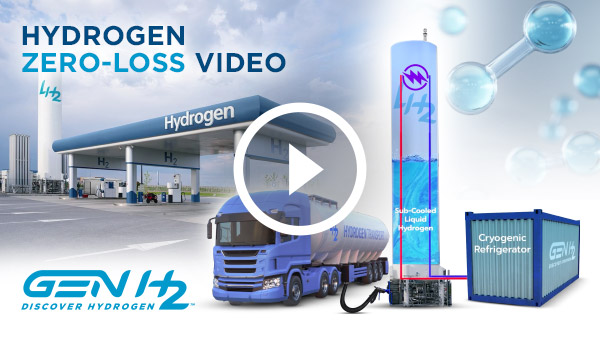The Secret to Zero-Loss Transfer
With the need to meet upcoming environmental regulations, hydrogen has become a top consideration for clean energy. This is especially true for mass transit, long-haul vehicles, and aviation where batteries and power grid constraints have increased demand for hydrogen as a renewable energy option.
A key benefit of using hydrogen is the efficient output it provides to power all forms of transportation. Liquid hydrogen offers the highest energy density and purity but requires proper storage and transfer procedures to control the molecule and minimize loss. To optimize efficiency and reduce costs, it is imperative to reduce losses.
During the space shuttle program, inefficiencies were identified that led to the loss of almost 50 percent of the liquid hydrogen purchased. Many of the losses occurred during the transfer of the molecule. If an organization can control hydrogen transfer losses, it can control costs. To prevent losses, it is important to understand typical ways hydrogen is lost.
Liquid Hydrogen Transfer Loss
Throughout the refueling process, significant hydrogen losses occur due to three primary reasons:
- 1% Daily Loss– up to one percent of liquid hydrogen is lost daily due to normal evaporation that occurs in a typical (passive) storage tank as the molecule warms, becomes gaseous, and vents.
- 13% Offload Loss– up to thirteen percent of previously purchased liquid hydrogen is lost while transferring the molecule from the tanker truck to the bulk tank. An eruption occurs causing additional evaporation. This eruption and increased liquid hydrogen in the tank forces venting to relieve the gaseous hydrogen pressure.
- 3% Dispensing Loss– cavitation in the liquid pump can cause up to 3 percent hydrogen loss per day during the dispensing operations.
The losses described above represent a single refueling station situation. The losses can compound exponentially as additional stations are added to the infrastructure system. According to the National Institute of Standards and Technology, the blowdown of an 18,000-gallon bulk liquid hydrogen storage tank at a pressure of 50 PSIG and 25 percent full will result in over 300 kilograms of vented hydrogen gas.
As stated earlier, it is critical to understand the points of loss so solutions can be identified to minimize or eliminate loss. The key to preventing or minimizing energy loss is cryogenics, as liquid hydrogen operates best at extremely cold temperatures.
Liquid Hydrogen Zero-Loss Transfer
The best way to mitigate transfer losses is to use a refrigerated storage system (active) where the liquid will remain sub-cooled. The sub-cooling eliminates the need for venting as it prevents evaporation. Additionally, with a refrigerated storage system, the liquid will remain sub-cooled, which will eliminate the vapor eruption during bulk tank fills and will prevent the loss of previously purchased hydrogen. Finally, daily losses that typically occur during dispensing operations are prevented. If small amounts of hydrogen evaporate during dispensing transfer, the vapors are recirculated back to the cold tank and immediately become liquefied.
GenH2 offers zero-loss transfer systems developed and based on proof of concepts from NASA. With a refrigerated storage system, the liquid hydrogen remains in a liquid state, so there is no gaseous buildup to vent during transfer. Additionally, there is no daily loss of hydrogen and no loss when the liquid is transferred to the end use. Continued advances in zero-loss technologies will ensure that the future of hydrogen benefits both people and the planet.
Click Below to Watch Transfer Video
on preventing hydrogen losses.

